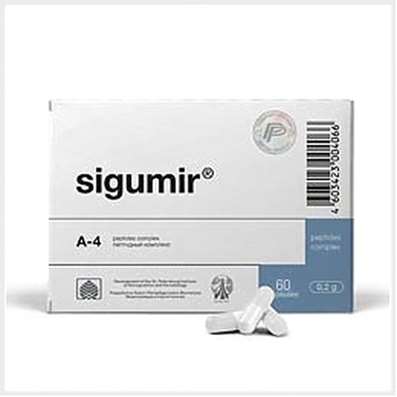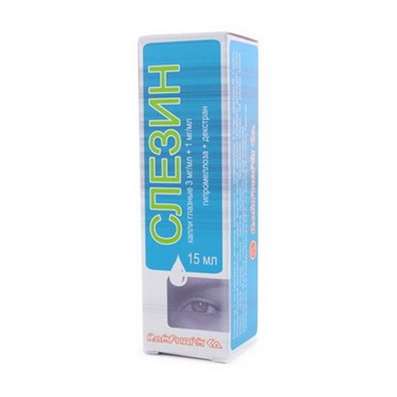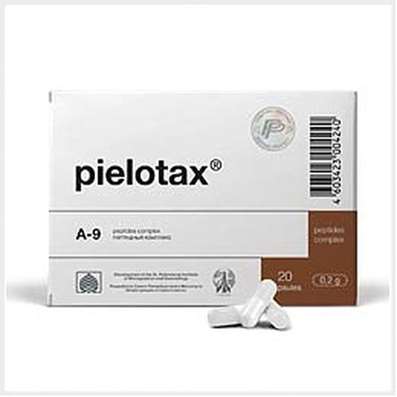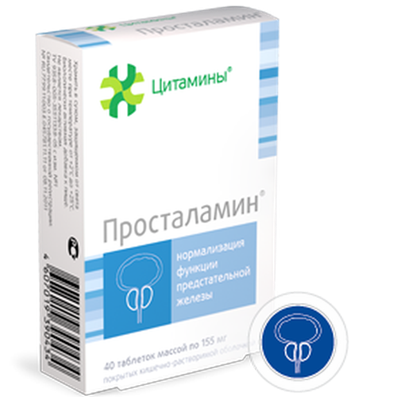Instruction for use: Serdolect
I want this, give me price
Dosage form: tablets
Active substance: Sertindole*
ATX
N05AE03 Sertindole
Pharmacological group:
Neuroleptics
The nosological classification (ICD-10)
F20 Schizophrenia: Schizophrenic Conditions; An exacerbation of schizophrenia; Schizophrenia; Chronic schizophrenia; Dementia praecox; Bleuler's disease; Psychotic discordant; Dementia early; The febrile form of schizophrenia; Chronic schizophrenic disorder; Psychosis of the schizophrenic type; Acute form of schizophrenia; Acute schizophrenic disorder; Cerebral Organic Insufficiency in Schizophrenia; Acute attack of schizophrenia; Schizophrenic psychosis; Acute schizophrenia; Sluggish schizophrenia; Sluggish schizophrenia with apathoabulic disorders; Acute stage of schizophrenia with agitation
Composition
Tablets, coated with a coating.
active substance:
sertindole 4 mg
auxiliary substances: corn starch; lactose monohydrate; ICC; giprolose; magnesium stearate; sodium croscarmellose
membrane: hypromellose; titanium dioxide (E171); macrogol 400; iron oxide yellow (E172)
Tablets, coated with a coating.
active substance:
sertindole 12 mg
auxiliary substances: corn starch; lactose monohydrate; ICC; giprolose; magnesium stearate; sodium croscarmellose
membrane: hypromellose; titanium dioxide (E171); macrogol 400; iron oxide yellow (E172); iron oxide red (E172)
Tablets, coated with a coating.
active substance:
sertindole 16 mg
auxiliary substances: corn starch; lactose monohydrate; ICC; giprolose; magnesium stearate; sodium croscarmellose
membrane: hypromellose; titanium dioxide (E171); macrogol 400; iron oxide red (E172)
Tablets, coated with a coating.
active substance:
sertindole 20 mg
auxiliary substances: corn starch; lactose monohydrate; ICC; giprolose; magnesium stearate; sodium croscarmellose
membrane: hypromellose; titanium dioxide (E171); macrogol 400; iron oxide yellow (E172); iron oxide red (E172); iron oxide black (E172)
Description of dosage form
Tablets, 4 mg: oval, biconvex, covered with a pale yellow coating, marked on the one side by the symbols "S4".
Pharmacokinetics
Sertindole is well absorbed from the intestine, Tmax - approximately 10 hours after administration. Food intake does not influence the speed and amount of absorption.
Apparent Vd sertindole after repeated use - about 20 l / kg. Sertindole binds to blood plasma proteins by 99.5%. Sertindole penetrates the GEB and the placental barrier.
Metabolized sertindole in the liver with the participation of cytochromes CYP2D6 and CYP3A. Metabolites do not have neuroleptic activity. T1 / 2 is about 3 days.
Sertindole and its metabolites are excreted mainly with feces and partly with urine.
Indication of the drug Serdolect
Schizophrenia.
Contraindications
hypersensitivity to the drug or its constituents;
uncorrectable hypokalemia or hypomagnesemia;
expressed cardiovascular diseases (including in the anamnesis);
congestive heart failure;
hypertrophy of the myocardium;
arrhythmia;
bradycardia (<50 bpm);
congenital syndrome of prolonged QT interval (including in family history);
The acquired extended QT interval (> 450 ms for men and 470 ms for women);
simultaneous use of drugs that extend the QT interval, including antiarrhythmics of class IA and III (including quinidine, sotalol, amiodarone, dofetilide), antipsychotics (thioridazine), macrolide antibiotics (erythromycin), quinolone antibiotics (gatifloxacin), antihistamines drugs (terfenadine, astemizole), as well as cisapride, lithium preparations;
simultaneous use of drugs that inhibit CYP3A isoenzymes, including antifungal agents from the azole group (itraconazole, ketoconazole), some macrolide antibiotics (erythromycin, clarithromycin), HIV protease inhibitors (indinavir), some BCC (verapamil, diltiazem), cimetidine;
severe hepatic impairment;
pregnancy;
lactation period;
age to 18 years (safety and efficacy not established).
Application in pregnancy and lactation
The safety of the use of the drug Serdolect is not studied during pregnancy and lactation.
The appointment in pregnancy is contraindicated.
If it is necessary to use Serdolect in the lactation period, breastfeeding should be stopped.
Side effects
The following side effects are observed in order of decreasing incidence: rhinitis and difficulty in breathing with the nose, decrease in ejaculate volume, dizziness, dry mouth, postural hypotension, weight gain, peripheral edema, dyspnea, paresthesia, QT interval prolongation, leukocyturia and hematuria, hyperglycemia, syncopal conditions, convulsive disorders, motor disorders, including tardive dyskinesia, paroxysms of ventricular tachycardia (such as "torsade de pointes").
Extrapyramidal symptoms on the background of sertindole administration occur with the same frequency as when using placebo.
Malignant neuroleptic syndrome (CNS) is very rare.
Some side effects (eg postural hypotension) are transient and occur at the beginning of therapy.
Interaction
The risk of prolonging the QT interval increases with concomitant treatment with drugs extending the QT interval or inhibiting the metabolism of sertindole. Use of the drug Serdolect simultaneously with such drugs is prohibited.
Sertindole is metabolized by the CYP2D6 and CYP3A isoenzymes. The concentration of sertindole in plasma increases with simultaneous admission with drugs that inhibit CYP2D6 (including fluoxetine, paroxetine, quinidine). A lower maintenance dose may be required, as well as an ECG examination before and after changing the dose of these drugs. In turn, sertindole and its major metabolites have a weak inhibitory effect on the activity of CYP2D6, with which β-adrenoblockers, antiarrhythmics, some antihypertensives, a large number of antipsychotics and antidepressants are metabolized.
Simultaneous use of sertindole and antibiotics-macrolides (erythromycin) and BCC (diltiazem, verapamil) may lead to a slight increase (<25%) of the serintol concentration in the plasma. However, the degree of increase may be higher in patients with weak CYP2D6 activity. Due to the fact that it is difficult to identify these patients in a planned order, simultaneous application of sertindole and preparations inhibiting CYP3A is contraindicated, because this can lead to a significant increase in the concentration of sertindole in the plasma.
Metabolism sertindola can significantly increase, leading to a decrease in its concentration in the blood plasma, under the influence of the following drugs - rifampicin, carbamazepine, phenytoin, phenobarbital. Reduction of antipsychotic activity of sertindole in such cases may require an increase in its dose.
Dosing and Administration
Inside, regardless of food intake, 1 time per day.
The initial dose is 4 mg / day. The daily dose is increased by 4 mg every 4-5 days until the optimum dose is achieved in the range of 12 to 20 mg / day. In exceptional cases (because of the risk of prolonging the QT interval with increasing doses), the drug can be administered at a maximum dose of 24 mg / day.
Re-appointment of the drug Serdolect after a break in treatment. If from the moment of stopping the drug Serdolect passed less than a week, then a gradual increase in dosage is not necessary (perhaps the appointment of the previous dosage). In other cases, you should increase the dosage to the optimal gradually, by titration, with an ECG test before titration.
Transition from taking another neuroleptic. Treatment with the drug Serdolect can begin with the recommended gradual increase in the dose at the same time that other orally administered neuroleptics are discontinued. For patients undergoing treatment with neuroleptic-depot, Serdolect is appointed instead of the next injection of neuroleptic-depot.
Special patient groups
Elderly patients. Purpose Serdolect should be preceded by a thorough examination of the CAS. A slower increase in dosage is required, lower doses should be used.
Decreased kidney function. In patients with renal insufficiency, correction of the dosing regimen is not required. Hemodialysis does not affect the pharmacokinetics of the drug.
Decreased liver function. A slower dose build-up and lower doses should be used in patients with mild or moderate hepatic insufficiency.
Overdose
Symptoms: drowsiness, slurred speech, tachycardia, decreased blood pressure, transient prolongation of the QT interval. Possible development of paroxysmal ventricular tachycardia (arrhythmias of the "pirouette" type), especially when joint application of sertindole with drugs that can cause this type of side effect.
Treatment: the drug should be discontinued, an intravenous catheter should be installed, gastric lavage should be performed, activated charcoal and laxatives should be taken; It is necessary to take measures to maintain airway patency and adequate oxygenation. A specific antidote of the drug does not exist and the drug can not be withdrawn by dialysis. Therefore, supportive therapy should be prescribed. It is necessary to immediately start monitoring the ECG and monitoring the main somatic indices. When the QT interval is prolonged, ECG monitoring is performed prior to the normalization of this parameter, while T1 / 2 sertindole (2 to 4 days) should be taken into account.
Correction of the decrease in blood pressure and manifestations of vascular collapse is carried out using intravenous solutions. If sympathomimetics are used, dopamine or epinephrine should be administered with caution. stimulation of β-adrenoreceptors with simultaneous antagonistic effect of sertindole on α1-adrenoreceptors can lead to a pronounced decrease in blood pressure. When using antiarrhythmics, it should be taken into account that quinidine, procainamide, disopyramide can cause prolongation of the QT interval.
When developing severe extrapyramidal disorders, anticholinergic drugs should be prescribed.
The patient should be under constant medical supervision until complete recovery.
Special instructions
Due to precautionary measures related to QT interval increase and ECG monitoring, Serdolect should be prescribed only in cases where there is already intolerance to at least one other antipsychotic.
The risk of prolongation of the QT interval increases with the use of sertindole at higher doses (20-24 mg / day). The prolongation of the QT interval, which occurs with the use of a number of drugs, can lead to the development of paroxysmal ventricular tachycardia and sudden death.
Control of blood pressure is necessary during the selection of the dose and at the beginning of the period of maintenance therapy.
CVS. Prior to the appointment of the drug Serdolect it is necessary to conduct an ECG study. At QT interval over 450 ms for men and 470 ms for women Serdolect should not be prescribed. An ECG test should be performed prior to the prescription of the drug, when Css is reached approximately 3 weeks after the start of the dose or a daily dose of 16 mg, and also 3 months after the start of treatment. During maintenance therapy, the ECG test should be performed every 3 months.
During maintenance treatment, the ECG test should be performed before and after increasing the dose of sertindole or after adding / increasing the dose of the drug that may increase the concentration of sertindole in the blood.
When extending the QT interval beyond 500 ms, sertindole should be discarded.
When a patient has symptoms such as palpitation, convulsions, fainting, indicating the possibility of arrhythmia, the attending physician should immediately begin the examination of the patient, including the ECG. Conduct ECG examination preferably in the morning.
Electrolyte disturbances. In patients with a risk of developing severe electrolyte disturbances, the level of potassium and magnesium in the serum should be measured before starting treatment with the Serdolect. Hypokalemia and hypomagnesemia should be adjusted before starting sertindole. It is recommended to control the concentration of potassium in the blood plasma in patients with vomiting and diarrhea, in patients taking potassium-withdrawing diuretics, as well as other electrolyte disorders.
Parkinson's disease. Antipsychotic drugs can inhibit the effects of dopamine agonists. Serdolect should be used with caution in patients with Parkinson's disease.
Decreased liver function. With a slight or moderate degree of impaired liver function, careful monitoring of the patient's condition is necessary. A slower dosage increase and a smaller maintenance dose are recommended.
Convulsive seizures. Serdolect should be administered with caution in patients with seizures in the anamnesis.
Late dyskinesia. Long-term use of antipsychotics, especially in high doses, is associated with a risk of developing tardive dyskinesia. If the symptoms of sertindole appear, then you should reduce the dosage or completely cancel the drug.
ZNS. In cases of development of the NSA, immediate withdrawal of the drug is necessary.
The withdrawal syndrome. With a sharp abolition of antipsychotics, nausea, vomiting, increased sweating, insomnia may occur. It is also possible to return the psychotic symptoms and the appearance of involuntary motor disorders (akathisia, dystonia, dyskinesia). It is necessary to gradually stop the drug.
Excipients. Tablets contain lactose monohydrate. Patients with hereditary intolerance to galactose, deficiency of lactase or impaired absorption of glucose and galactose should not be prescribed.
Pregnancy and lactation. Since the safety of the drug Serdolekt in pregnancy in humans has not been studied, then this drug should not be administered to pregnant women. The safety of the use of the drug Serdolect in breast-feeding women has not been studied. In cases where the use of sertindole is considered necessary, breastfeeding should be discontinued.
Children and adolescence (up to 18 years). The safety and effectiveness of the drug Serdolect in children and young men has not been studied, so the drug should not be used in children and adolescents.
Influence on the ability to drive vehicles or work with other mechanisms. Although Serdolect does not have a sedative effect, it is not recommended for patients, against the background of its administration, to drive or otherwise operate the machine until an individual tolerance of the drug is established.
Release form
Coated tablets, 4 mg. In contour acrylic packaging (blister) of PVC and Al-foil, 10 pcs. 3 blisters in a cardboard box. At packing on Joint-Stock Company "ZiO-Zdorovie": in contour cellular packing (blister) from PVC and Al-Foil, 10 pcs. 2 blisters in a cardboard box.
Coated tablets, 12 mg. In the outline cell packaging (blister) of PVC and Al-foil, 14 pcs. 2 blisters in a cardboard box. At packing on Joint-Stock Company "ZiO-Zdorovie": in contour cellular packing (blister) from PVC and Al-Foil, 14 pieces. 1 or 4 blisters in a cardboard bundle.
Coated tablets, 16 mg. In the outline cell packaging (blister) of PVC and Al-foil, 14 pcs. 2 blisters in a cardboard box. At packing on Joint-Stock Company "ZiO-Zdorovie": in contour cellular packing (blister) from PVC and Al-Foil, 14 pieces. 1 or 4 blisters in a cardboard bundle.
The tablets covered with a cover, 20 mg. In the outline cell packaging (blister) of PVC and Al-foil, 14 pcs. 2 blisters in a cardboard box. At packing on Joint-Stock Company "ZiO-Zdorovie": in contour cellular packing (blister) from PVC and Al-Foil, 14 pieces. 1 or 4 blisters in a cardboard bundle.
Conditions of leave from pharmacies
On prescription.
Storage conditions for Serdolect
In the dark place at a temperature of no higher than 25 ° C.
Keep out of the reach of children.
Shelf life of Serdolect
5 years.
Do not use after the expiry date printed on the package.

 Cart
Cart





